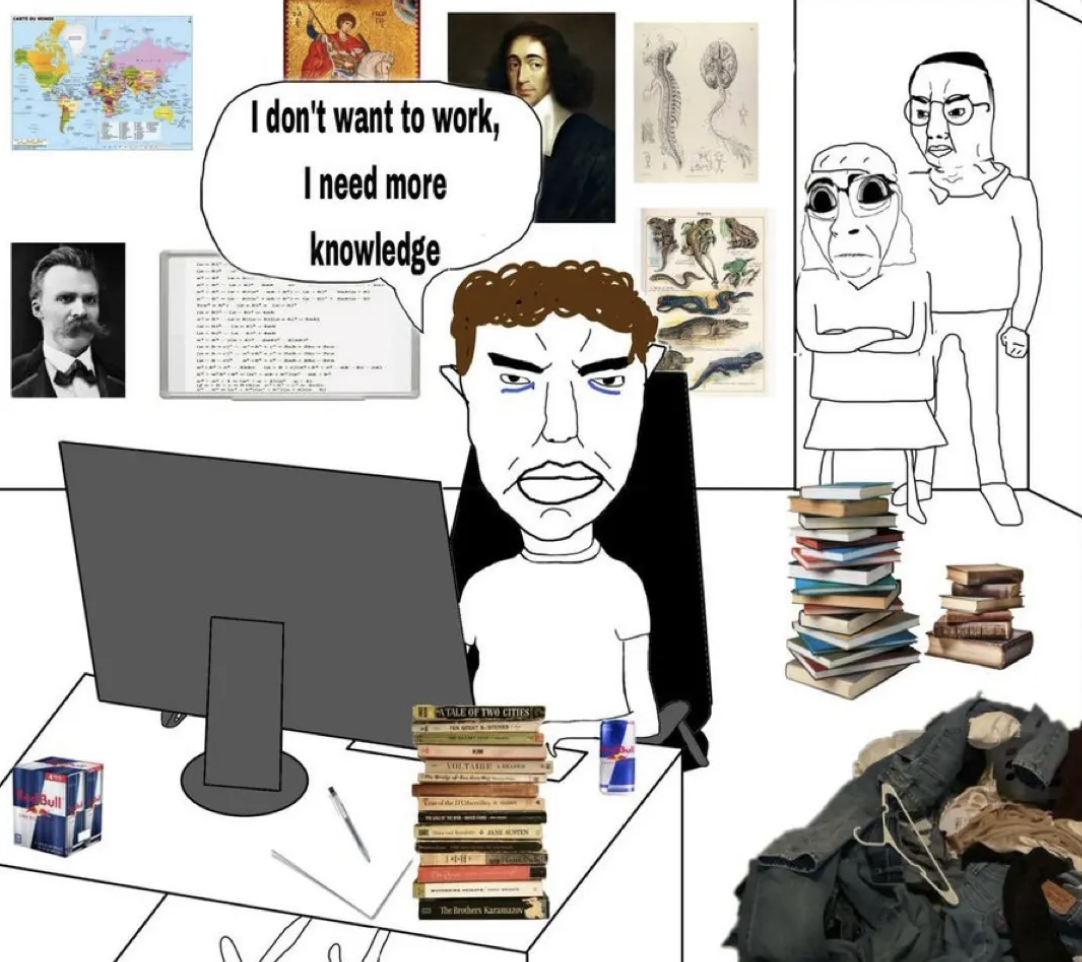It often feels like every other article these days is debating the merits and pitfalls of long-term remote work. And the need for connection with other people is often a top concern; two years into the pandemic and workplace community is still integral to wellbeing.
Research backs up the fear. The Microsoft Work Trend Index 2022 found that 55% of hybrid workplace employees and 50% of remote employees feel lonelier at work than before going remote or hybrid.
At the same time, a Gallup Poll found that 9 out of 10 workers want to remain remote to some degree. And, in a survey of workers conducted by Gartner, more than 20% said they’re happy not to form deep bonds with their colleagues. They instead prefer to socialize with people who share their interests, hobbies, and more. To meet their social and professional development needs, employees are seizing opportunities to build communities outside the office.
Businesses are reacting, too. Most are rethinking their offices, cultures, and missions to give employees the right balance of workplace community and remote flexibility (including flexible working hours).
But how companies and individuals are going about it depends almost entirely on what their business looked like before the pandemic. In fact, we’re noticing that the way companies are reimagining work through physical and virtual communities today falls along a clear-cut digital maturity curve. We’ve sorted these companies into three categories:
- Remote reactionaries
- Digital daredevils
- Metaverse mavericks
Building Community in the Workplace: REMOTE REACTIONARIES
For organizations that relied almost exclusively on in-office operations, the pandemic came on like a tidal wave. Many had no infrastructure in place to support remote work on a large scale, let alone make it a rewarding, engaging experience for workers. Nevertheless, they pivoted, moving work home—often, for good.
But no matter how flexible these organizations have become out of sheer need, their employees are “remote reactionaries,” and are likely to cling to the more traditional notions of community in the workplace. For these individuals, building corporate connection across a disparate, remote workforce can include:
- Co-working spaces
- Retreats
- Opportunities to gather physically.
Fostering Community in the Workplace for Remote Reactionaries: Co-Working Spaces and Retreats
Co-working isn’t new, but the way co-working spaces are now being used is. WeWork now markets itself to organizations looking to lease flexible space, in addition to professionals looking for a quiet space to work. Many businesses, rather than renting expensive corporate real estate for employees who do not want or need an on-site office, are offering co-working memberships as a benefit for employees. Many co-working spaces also offer professional networking events, such as lunch-and-learns or happy hours, to help members connect with each other.
Meanwhile, SwitchYards—the country’s first neighborhood work club—brings soul to co-working with their trademark design. Their five Atlanta locations (with a sixth 24/7 option on the way) provide the perfect venue for whiteboard, taking meetings, and completing in-person creative work.
When it comes to corporate retreats, organizations like Gatho, Office Together, and Peerspace help businesses plan off-site gatherings that include work space, food, social activities, and technology needs. Gatho, for one, provides unique in-person gatherings based in Miami. Whether they’re planning for a team of art nerds, wellness gurus, or party animals, Gatho creates impactful, curated experiences, pulling from over 200,000 specialized properties and vendors across North America. Their goal is to foster connected company cultures for even the most diehard remote teams.
For employees that fall into the remote reactionary category, co-working and retreats will feel familiar—yet the companies that now offer these services continue to innovate, providing new avenues of workplace community for even the most traditional thinkers.
Building Community in the Workplace: DIGITAL DAREDEVILS
When the pandemic led to shut downs, some companies—and individuals—didn’t flinch. These organizations were already heavily digital, with employees working remotely and connecting digitally on a relatively regular basis. At the very least, the capacity for remote operations was fully in place.
For these businesses, the pandemic presented an opportunity to push the envelope, exploring community on a deeper, more interest-based level. Perhaps most importantly, their “digitally daring” employees don’t need physical gatherings for a sense of community. For these individuals, building bonds extends beyond their organization, and includes the broader global community.
Examples of Community in the Workplace for the Digitally Daring: Social Connectors and Decentralized Autonomous Organizations
Professionals looking to meet others not only within their industry but also beyond are now using social connectors, like Lunchclub’s AI tool, to build their communities. Lunchclub asks a series of questions and then helps individuals set up 45-minute virtual (or in-person) get-togethers with other professionals. The tool predicts people who are a good match based on more than just being in the same industry or living in the same town. When a professional gets an invite to meet with another, they have the option of accepting or declining the meeting.
FlowClub offers another unique social connector opportunity, giving employees an avenue not only for social connection, but also focused collaboration on large projects. Some employers even pay for their team members to use FlowClub, since it enables productivity. Once members sign up for the platform, they can meet in small groups and join forces to meet certain goals, working together to share ideas and tackle tasks.
Marco and Moment House take a different approach, connecting individuals and teams through extraordinary online and in-person experiences. Marco makes it easy to find and register for:
- virtual events
- in-person events
- Retreats
Moment House invites artists to create digital, interactive, ticketed experiences for fans to enjoy all around the globe.
For the particularly daring, token-gated communities (which fall under the decentralized autonomous organizations—DAO—umbrella) are also emerging to offer a sense of virtual community. A recent NY Times article described DAOs as a financial flash mob and group chat with a bank account, which is the best description we’ve found. Simply put, groups form around a common mission, typically funding a specific cause or buying certain things. Then, using cryptocurrency, people around the world who have never met—and will never meet—operate as a business.
Sounds complicated, but it doesn’t have to be. For example, DAO mainstay Friends With Benefits began as a way for founder Trevor McFedries to get his art friends into the tech and finance scene. To join, members need $FWB and to make it through the application process (currently sitting at a 20% acceptance rate). Based on how many tokens they hold, accepted members get tiered access to all the virtual goodies—Discord servers, newsletters—as well as exclusive in-person events, like an audio-video deep listening session at Neuehouse.
Since growing their membership, FWB has begun branching out to properties and products (including an original yerba maté drink in the works). FWB leadership expects to see more collaborations emerge from members as the community continues to grow.
Employees that are digital daredevils will benefit from the unique connection opportunities that social connectors and DAOs provide, pushing their sense of workplace community beyond the basics.
Building Community in the Workplace: METAVERSE MAVERICKS
Finally, the most mature companies and individual employees on our radar don’t fit the mold for any physical or virtual communities as we know them today. They aren’t bound by traditional notions of work or community.
These metaverse mavericks, whether they work for a company or for themselves, are writing their own rules.
How to Build Community in the Workplace for Metaverse Mavericks: A Whole New World
New business models and companies are popping up to make it easy to create virtual communities in the metaverse. GatherTown lets businesses or groups totally customize their metaverse from a spaceship meeting to a rooftop bar. With this tool, workers can also add in the integrations—like calendars or TVs.
Syndicate is another fully virtual platform, but instead of facilitating coworking sessions, its goal is to democratize investing. Syndicate is a decentralized investing protocol and network that enables communities and investors to create web3-native investing DAOs. They are also demystifying DAOs by providing ways to simplify the DAO creation process (as much as legally possible). The Syndicate model allows members to create digital investment wallets. They can then invite fellow Syndicate members to these web3 investment hubs. Essentially, Syndicate allows members to digitally pool their capital to make big investment moves.
Research indicates that businesses using the metaverse for work is likely to grow. The Microsoft Work Trend Index 2022 found that 52% of employees are open to using digital immersive spaces in the metaverse for meetings or team activities in the next year. Additionally, 47% of employees are open to representing themselves as an avatar in meetings, which is typical in metaverses.
For metaverse mavericks, playbooks for how to create a sense of community in the workplace know no bounds. These companies are transcending physical and virtual boundaries to bond in an entirely unique way.
The Future of Working Together, Separately
Work has changed—almost certainly forever—in the past two years. And we aren’t done yet. Over the next few years, the way we work and connect together will continue to evolve, especially as digital platforms continue to improve. By maintaining an inventors mindset—meaning trying new ideas until you find what works—both employees and companies can find the model that works best for their specific needs. ∎
Liked this? Also check out:
.png)





